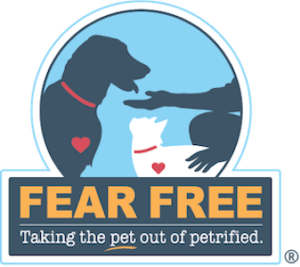By Ramona Marek
Reducing fear, anxiety, and stress in animals they care for is one of the most important things rescue and shelter employees and volunteers do. But often, their own fear, anxiety, and stress stand in the way. Helping animals in need find homes is rewarding, but the work takes a toll on their emotional health.
As a life-long animal lover I have supported rescues in many ways, including adoption, donating money and supplies to local organizations, helping with community fundraisers, and advocating for animal welfare. Last spring, when a neighbor momcat had seven kittens in my attic, I had my first-time foster experience, including bottle-feeding kittens.
The discovery of cats and kittens living in my attic took the coordinated efforts of three rescue organizations to get them safely out of the attic, in foster homes, and all adopted. Wanting to be more active in my new community, learn new things, and do something good, I began volunteering.
I contacted Judith Richbourg, founder of O’Malley Alley Cat Rescue, in Tyler, Texas, who initiated the email SOS for the attic cat/kitten rescue. I visited her at the O’Malley Cat Lounge, met some of the adorable, adoptable 25-plus cats living there, and asked how I could help.
Now I go in on Saturday mornings and help socialize cats who are shy, new to the cat lounge, and feel overwhelmed. I play with, give treats, talk to, and pet kitties, if they are inclined. I also play with cats who are more outgoing. The interaction, with cats of any age, helps to make them more adoptable.
Other duties include helping to clean litter boxes, wash dishes, vacuum, mop, and do laundry–just like at home but on a bigger scale.
For Heather Payer-Smith, president of The Cat’s Meow Rescue in Longview, Texas, volunteering was inspired by the saying “Be the change you want to see in the world.”
“When we chose to get involved in animal rescue, there was a big problem with our local shelter,” she says. “They had a very high euthanasia rate and few advocates for the animals. We felt that if change was going to happen, we needed to do our part, so became volunteers at the shelter. I quickly realized there were few advocates for the cats at the shelter so got involved with taking pictures and doing social media awareness for the animals, and it started to make a difference, but it wasn’t enough. Together with four other cat lovers that were volunteers as well, we formed The Cat’s Meow Rescue so we could offer a second chance to shelter cats and kittens facing euthanasia.”
All the rescue volunteers expressed similar sentiments: that they work on behalf of those without voices, making a difference in the lives of cats and dogs, and helping their community.
Compassion Fatigue and What to Do About It
Many volunteers find it hard to create boundaries for work-rescue-life balance. Rescue work can be emotionally challenging, and many people find themselves struggling with burnout, compassion fatigue, and depression.
“Dealing with those emotions can be tough,” says Payer-Smith.”We do what we do because we care, and when we see the struggles of the animals, the overwhelming numbers in need, feeling exhausted just from our own day-to-day responsibilities and then trying to help others with theirs can take a toll for sure.”
Self-care, stepping away from rescue, and personal time are often seen as impossible, even though they are sorely needed to rejuvenate body and spirit. Vacations, weekend getaways with family, or hobbies get pushed aside. Little things such as a dinner out, meeting friends for happy hour, or squeezing in a Pilates or yoga class can give a brief break, but even those minutes of respite can be difficult for people with undiagnosed or untreated compassion fatigue.
Fortunately, the subject is now much more openly discussed in animal welfare circles, at conferences, and online. The Maddie’s Shelter Medicine Program at the University of Florida’s Compassion Fatigue Strategies online course and the Compassionate Badassery Lab, as well as online resources like these from Humane Network or Stress and Animal Protection Work from ASPCAPro, can help rescuers build resilient, sustainable approaches to their volunteer work. There’s also a new Fear Free For Humans course (available only to Fear Free members with active memberships on FearFreePets.com), which addresses communication techniques and ways to incorporate self-care into a busy life.
Addressing compassion fatigue with a self-care plan can help burned-out volunteers get their sense of fulfillment back. Says Payer-Smith, “It can be overwhelming at times, but when I start to question if what we do is making a difference, I often think of the story about the man tossing a starfish back into the water and think to myself, ‘It made a difference for that one.’”
This article was reviewed/edited by board-certified veterinary behaviorist Dr. Kenneth Martin and/or veterinary technician specialist in behavior Debbie Martin, LVT.
Ramona D. Marek, MS Ed, is an award-winning writer and 2017 recipient of the prestigious Fear Free Pets Award. She writes about pet care, health and behavior, and cats in the arts. She’s also the author of “Cats for the GENIUS.” Her feline muse is Natasha Fatale, a full-time diva dressed as an “anything but plain” brown tabby. You can read more about Ramona and her work at www.RamonaMarek.com.
Want to learn more about Fear Free? Sign up for our newsletter to stay in the loop on upcoming events, specials, courses, and more by clicking here.






